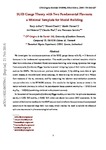SU(2) gauge theory with two fundamental flavors: A minimal template for model building
| dc.contributor.author | Arthur, R | |
| dc.contributor.author | Drach, V | |
| dc.contributor.author | Hansen, M | |
| dc.contributor.author | Hietanen, A | |
| dc.contributor.author | Pica, C | |
| dc.contributor.author | Sannino, F | |
| dc.date.accessioned | 2018-03-08T08:46:58Z | |
| dc.date.available | 2018-03-08T08:46:58Z | |
| dc.date.issued | 2016-11-29 | |
| dc.identifier.issn | 2470-0010 | |
| dc.identifier.issn | 2470-0029 | |
| dc.identifier.other | 094507 | |
| dc.identifier.uri | http://hdl.handle.net/10026.1/11010 | |
| dc.description | 35 pages, 18 figures | |
| dc.description.abstract |
We investigate the continuum spectrum of the SU(2) gauge theory with Nf=2 flavors of fermions in the fundamental representation. This model provides a minimal template which is ideal for a wide class of Standard Model extensions featuring novel strong dynamics that range from composite (Goldstone) Higgs theories to several intriguing types of dark matter candidates, such as the strongly interacting massive particles (SIMPs). We improve our previous lattice analysis [1] by adding more data at light quark masses, at two additional lattice spacings, by determining the lattice cutoff via a Wilson flow measure of the w0 parameter, and by measuring the relevant renormalization constants nonperturbatively in the regularization-invariant momentum (RI'-MOM) scheme. Our result for the lightest isovector state in the vector channel, in units of the pseudoscalar decay constant, is mV/FPS∼13.1(2.2) (combining statistical and systematic errors). For the axial channel our result is mA/FPS∼14.5(3.6), which however does include a similarly sized additional systematic error due to residual excited-states contamination. In the context of the composite (Goldstone) Higgs models, our result for the spin-one resonances are mV>3.2(5) TeV and mA>3.6(9) TeV, which are above the current LHC constraints. In the context of dark matter models, for the SIMP case our results indicate the occurrence of a compressed spectrum at the required large dark pion mass, which implies the need to include the effects of spin-one resonances in phenomenological estimates. | |
| dc.format.extent | 0-0 | |
| dc.language | en | |
| dc.language.iso | en | |
| dc.publisher | American Physical Society (APS) | |
| dc.subject | hep-lat | |
| dc.subject | hep-lat | |
| dc.subject | hep-ph | |
| dc.subject | hep-th | |
| dc.title | SU(2) gauge theory with two fundamental flavors: A minimal template for model building | |
| dc.type | journal-article | |
| dc.type | Journal Article | |
| plymouth.author-url | https://www.webofscience.com/api/gateway?GWVersion=2&SrcApp=PARTNER_APP&SrcAuth=LinksAMR&KeyUT=WOS:000388823900011&DestLinkType=FullRecord&DestApp=ALL_WOS&UsrCustomerID=11bb513d99f797142bcfeffcc58ea008 | |
| plymouth.issue | 9 | |
| plymouth.volume | 94 | |
| plymouth.publisher-url | http://dx.doi.org/10.1103/PhysRevD.94.094507 | |
| plymouth.publication-status | Published online | |
| plymouth.journal | Physical Review D | |
| dc.identifier.doi | 10.1103/physrevd.94.094507 | |
| plymouth.organisational-group | /Plymouth | |
| plymouth.organisational-group | /Plymouth/Faculty of Science and Engineering | |
| plymouth.organisational-group | /Plymouth/Faculty of Science and Engineering/School of Engineering, Computing and Mathematics | |
| plymouth.organisational-group | /Plymouth/REF 2021 Researchers by UoA | |
| plymouth.organisational-group | /Plymouth/REF 2021 Researchers by UoA/EXTENDED UoA 10 - Mathematical Sciences | |
| plymouth.organisational-group | /Plymouth/REF 2021 Researchers by UoA/UoA10 Mathematical Sciences | |
| plymouth.organisational-group | /Plymouth/Users by role | |
| plymouth.organisational-group | /Plymouth/Users by role/Academics | |
| dcterms.dateAccepted | 2016-02-21 | |
| dc.identifier.eissn | 2470-0029 | |
| dc.rights.embargoperiod | Not known | |
| rioxxterms.versionofrecord | 10.1103/physrevd.94.094507 | |
| rioxxterms.licenseref.uri | http://www.rioxx.net/licenses/all-rights-reserved | |
| rioxxterms.type | Journal Article/Review |


